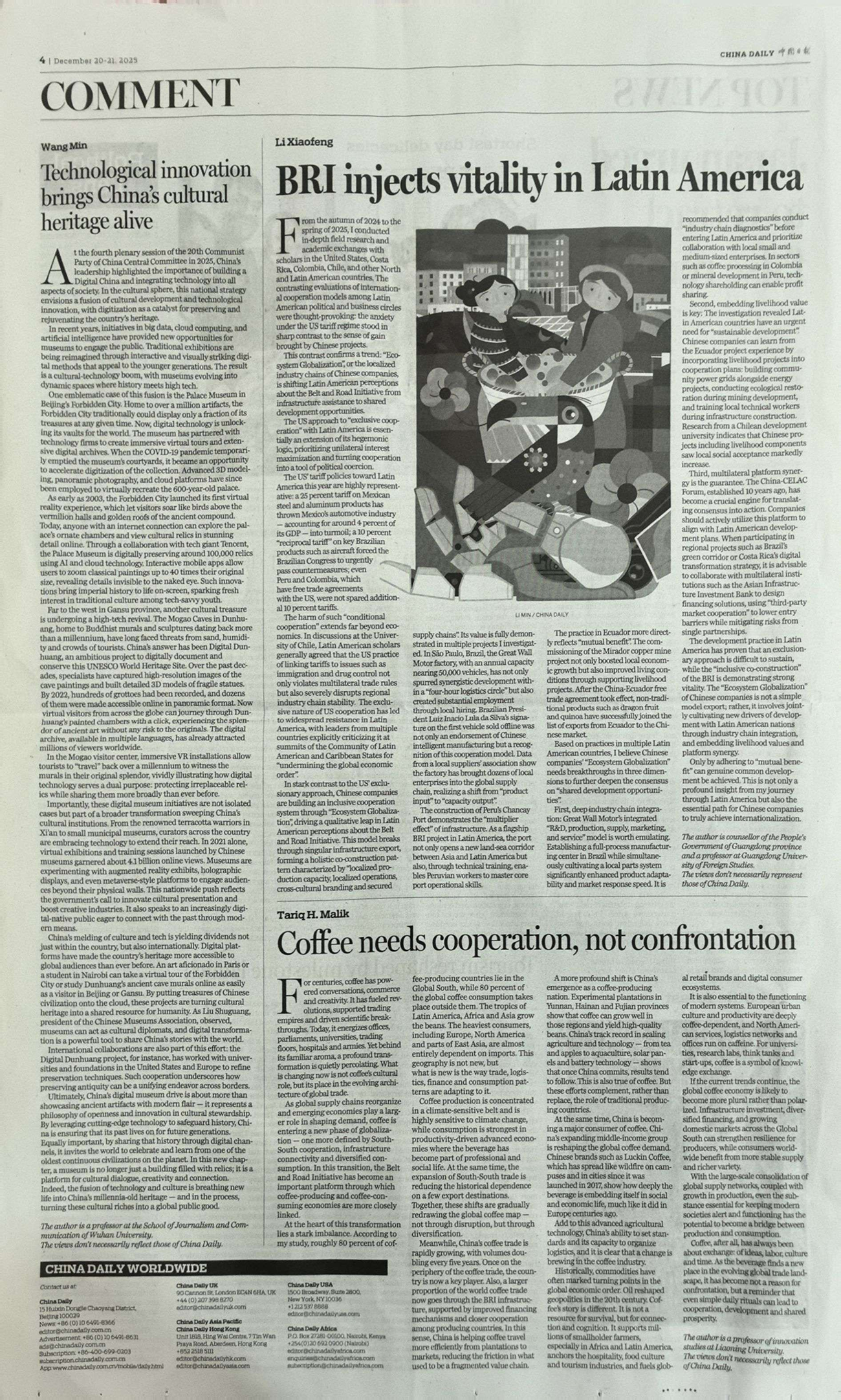英国威斯特敏斯特大学中国传媒中心2009年年会征文通告
中国媒体的创意与革新
英国威斯特敏斯特大学中国传媒中心2009年年会征文通告
伦敦 2009年6月4日至5日
英国威斯特敏斯特大学中国传媒中心(The China Media Center, University of Westminster)继2005年6月正式成立以来,将于2009年6月4日至5日在伦敦举办第五次年会。本次年会的主题为“中国媒体的创意与革新”(Creativity and Innovation in Chinese Media )。欢迎海内外对此主题感兴趣的学者、专家,同学和媒体从业者积极参会。
过去的三十年见证了中国媒体的转型。中国媒体已经由单纯受政府资助转型为今天大部分的收入来自广告市场。对于媒体经营者,新闻记者和媒体策划人士来说,如何争取到观众成为了他们最关心的问题。同时,他们仍然需要坚持党性原则,并且对于中国的发展进行正面报道。许多观察家指出,中国媒体所担负的双重任务迫使他们寻求报道新闻和娱乐观众的新思路。这些新思路的来源是丰富而多元的。在电视剧方面,中国媒体采取了直接购买外国电视节目的形式。譬如,许多韩国的电视剧一度风靡了中国的电视屏幕。在电视娱乐节目方面,虽然在前几年出现了未经与外国媒体机构授权的借鉴情况,今天,越来越多的中国电视机构已经通过合法程序购买外国的电视节目模式。在电视新闻方面,凤凰卫视通过国际媒体的惯用方式报道新闻。同样的内容,他们的报道方式更为适合观众的接受。在杂志方面,中国媒体与西方大的出版社合作成为运行模式之一。他们在中国建立了全球著名的时尚和生活方式类杂志的在地版本。这些媒体借用实践并非是从一个国家到另外一个国家的简单照搬。在大部分情况下,中国媒体总是通过改造国外原创形式使其更加适合中国观众的接受。
同时,中国媒体开始超越进口模式,积极创造具有原创性的媒体内容。他们沿袭了其他国家的经验,首先效仿比较先进的媒体机构的经验,然后逐渐生产具有自身特色的内容。有些中国媒体机构已经计划将自身发展成真正的国际媒体,创造完全具有原创性的内容,并且把节目,观念和模式出口到其他国家。
在中国媒体经历这些革新的同时,中国社会也正发生着广泛而快速的社会和文化变迁。在过去的三十年中,上千万的农村人口从农村迁移到城市;上千万的城市居民目睹了自身的财富和文化资源的转型。有些人对于这些文化变迁抱以欢迎态度,认为这些吸引观众的媒体形式的出现是中国媒体可喜的成绩。他们为中国媒体获得的这些新的空间和受到的外国价值观念的影响感到欢欣鼓舞。他们把这些变迁看成是为建设新的中国添砖加瓦。另外一些人则担忧这些变迁威胁了中国的传统文化价值,是外来文化对于自身的侵犯。例如,中国的电影事业。不少人指出,中国电影在国际上获得的成功所付出的代价是改变中国的传统文化主题以适应西方的审美标准。他们认为,中国文化产品只有放弃其中国文化的特质才会在国际上取得成功。
总之,我们欢迎诸位从以下这些方面来关注中国媒体的创意和革新问题。当然,我们的研究和讨论兴趣绝不仅限于这些方面:
- 中国媒体与海外媒体公司的合作
- 版权与中国媒体
- 外国媒体运作模式与中国的实际情况
- 中国媒体的原创性
- 对于中国媒体的变迁,创意和革新过程的管理
- 中国媒体进入全球市场
- 当代中国文化变迁的本质
- 中国媒体生产者的新空间和新制约
- 中国媒体与外国资本
请感兴趣参加年会的朋友于2009年2月1日前将不超过250字的论文英文梗概发给郭大为先生 georgedawei@hotmail.com 。若想了解有关本次年会和中国传媒中心的其他咨讯,请访问中国传媒中心的博 客http://chinamediacentre.org/。承蒙诸位!
CHINA MEDIA CENTRE
University of Westminster
Call for Papers
Creativity and Innovation in Chinese Media
London June 4-5
The last thirty years have seen a transformation of the Chinese media. They have moved from being solely the “throat and tongue of the party” supported by state subsidies to a situation where the majority of their income is from advertising revenue, for which they must vigorously compete with each other. The need to gain and hold an audience are today central to the concerns of media managers, journalists and creative workers. At the same time, they still need to follow the party line and to carry positive messages about China's development. Many observers have noted how these two tasks impose unique burdens on the media and oblige them to develop new strategies to report the news and to entertain the audience.
The change in the economic situation of the media, and the orientation on the preferences of consumers, has meant that Chinese media producers have had to find new forms of journalism and new kinds of programming that are attractive to the mass audience.
In television, despite the regulatory protection that CCTV still enjoys, it must face sharp competition in markets like Guangdong from provincial and city stations whose programming is much more attuned to local tastes and language. Nationally, provincial satellite channels, notably from Hunan, are in the forefront of innovation in entertainment programming. Similarly, Phoenix TV is introducing new ways of reporting the news and winning a substantial audience, particularly amongst the younger and elite audiences.
In the newspaper press there has been a series of new and innovative titles, which have much more sensational and personalised reporting than the old norms. Some journalists have reported on events and individuals that have had major repercussions for aspects of the legal situation. At the same time there has been an explosion of journalism devoted to different aspects of lifestyle and consumption, aimed squarely at the new middle class audience. In the broader printed press, a new generation of magazines targeting audiences like young women and, more recently, young men, have enjoyed substantial success in terms of circulation.
Social change, and in particular the rise of car ownership, has also led to a revival of radio. The notorious traffic jams of big Chinese cities have created what is literally a captive audience for the medium. So, too, increasing affluence and the spread of the internet has led to an explosion of computer gaming, both offline and online, that is attractive to many young people.
The sources of these new ideas are many and varied. Sometimes, as with TV dramas, there is the straightforward purchase and broadcasting of foreign shows, many originating from Korea, which have proved very popular with audiences. In entertainment programming, there have been notorious cases of unauthorised borrowings from abroad (Supergirl is the most famous example) but today there are more and more entirely legal purchases of foreign formats. In broadcast news, Phoenix uses presentational techniques developed by international broadcasters to deliver the same sort of news as CCTV in a more approachable format. In magazines, the model is one of close collaboration in joint ventures between Chinese publishers and big western publishers that have established Chinese equivalents of many of the most famous global fashion and lifestyle titles. These borrowings, however, are hardly ever simple transfers from one country to another: in almost all cases, Chinese importers modify the original to fit better with the preferences of their audience.
Increasingly, however, Chinese media are seeking to break free from imported models and to produce media content that is wholly original. They are following in the footsteps of producers in other countries who started off with a debt to more advanced media systems but have increasingly generated their own nationally-specific content. Some Chinese media organisations have plans to develop themselves into truly global players, to generate wholly original content, and to export their programmes, ideas and formats to other countries.
These innovations in the media are taking place at the same time as the much more general and very rapid social and cultural changes that are sweeping China. Millions of people flood into the cities from the countryside and millions of urban dwellers have seen their personal wealth and their cultural horizons transformed in the last thirty years. Some welcome these cultural changes and celebrate the forms of media that are attractive to this new audience. They welcome the relative freedom and the influence of foreign ideas and values, seeing them as the building blocks of the new China. Others worry that the deluge of novelty threatens the traditional values of Chinese culture and seek to insulate the population from alien cultures. In the film industry, for example, some claim that the price of international success has been the adaptation of traditional Chinese themes and stories to fit western tastes. China will only succeed in exporting cultural products, they argue, if they are stripped of their unique Chinese characteristics.
We invite papers that look at any aspect of this complex process of change. Our interests include, but are not limited to:
- Joint deals between Chinese and overseas media companies
- Intellectual property rights and the Chinese media
- Adapting foreign models to Chinese conditions
- Originating wholly Chinese media artefacts
- Managing the process of change, creativity and innovation in the Chinese media
- Planning entry into the global market
- The nature of cultural change in contemporary China
- New freedoms and new constraints for Chinese media producers
- Chinese media and foreign capital
Send abstracts (250 words maximum) by 1st February to Guo Dawei georgedawei@hotmail.com
CHINA MEDIA CENTRE
University of Westminster
Call for Papers
Creativity and Innovation in Chinese Media
London June 4-5
The last thirty years have seen a transformation of the Chinese media. They have moved from being solely the “throat and tongue of the party” supported by state subsidies to a situation where the majority of their income is from advertising revenue, for which they must vigorously compete with each other. The need to gain and hold an audience are today central to the concerns of media managers, journalists and creative workers. At the same time, they still need to follow the party line and to carry positive messages about China's development. Many observers have noted how these two tasks impose unique burdens on the media and oblige them to develop new strategies to report the news and to entertain the audience.
The change in the economic situation of the media, and the orientation on the preferences of consumers, has meant that Chinese media producers have had to find new forms of journalism and new kinds of programming that are attractive to the mass audience.
In television, despite the regulatory protection that CCTV still enjoys, it must face sharp competition in markets like Guangdong from provincial and city stations whose programming is much more attuned to local tastes and language. Nationally, provincial satellite channels, notably from Hunan, are in the forefront of innovation in entertainment programming. Similarly, Phoenix TV is introducing new ways of reporting the news and winning a substantial audience, particularly amongst the younger and elite audiences.
In the newspaper press there has been a series of new and innovative titles, which have much more sensational and personalised reporting than the old norms. Some journalists have reported on events and individuals that have had major repercussions for aspects of the legal situation. At the same time there has been an explosion of journalism devoted to different aspects of lifestyle and consumption, aimed squarely at the new middle class audience. In the broader printed press, a new generation of magazines targeting audiences like young women and, more recently, young men, have enjoyed substantial success in terms of circulation.
Social change, and in particular the rise of car ownership, has also led to a revival of radio. The notorious traffic jams of big Chinese cities have created what is literally a captive audience for the medium. So, too, increasing affluence and the spread of the internet has led to an explosion of computer gaming, both offline and online, that is attractive to many young people.
The sources of these new ideas are many and varied. Sometimes, as with TV dramas, there is the straightforward purchase and broadcasting of foreign shows, many originating from Korea, which have proved very popular with audiences. In entertainment programming, there have been notorious cases of unauthorised borrowings from abroad (Supergirl is the most famous example) but today there are more and more entirely legal purchases of foreign formats. In broadcast news, Phoenix uses presentational techniques developed by international broadcasters to deliver the same sort of news as CCTV in a more approachable format. In magazines, the model is one of close collaboration in joint ventures between Chinese publishers and big western publishers that have established Chinese equivalents of many of the most famous global fashion and lifestyle titles. These borrowings, however, are hardly ever simple transfers from one country to another: in almost all cases, Chinese importers modify the original to fit better with the preferences of their audience.
Increasingly, however, Chinese media are seeking to break free from imported models and to produce media content that is wholly original. They are following in the footsteps of producers in other countries who started off with a debt to more advanced media systems but have increasingly generated their own nationally-specific content. Some Chinese media organisations have plans to develop themselves into truly global players, to generate wholly original content, and to export their programmes, ideas and formats to other countries.
These innovations in the media are taking place at the same time as the much more general and very rapid social and cultural changes that are sweeping China. Millions of people flood into the cities from the countryside and millions of urban dwellers have seen their personal wealth and their cultural horizons transformed in the last thirty years. Some welcome these cultural changes and celebrate the forms of media that are attractive to this new audience. They welcome the relative freedom and the influence of foreign ideas and values, seeing them as the building blocks of the new China. Others worry that the deluge of novelty threatens the traditional values of Chinese culture and seek to insulate the population from alien cultures. In the film industry, for example, some claim that the price of international success has been the adaptation of traditional Chinese themes and stories to fit western tastes. China will only succeed in exporting cultural products, they argue, if they are stripped of their unique Chinese characteristics.
We invite papers that look at any aspect of this complex process of change. Our interests include, but are not limited to:
- Joint deals between Chinese and overseas media companies
- Intellectual property rights and the Chinese media
- Adapting foreign models to Chinese conditions
- Originating wholly Chinese media artefacts
- Managing the process of change, creativity and innovation in the Chinese media
- Planning entry into the global market
- The nature of cultural change in contemporary China
- New freedoms and new constraints for Chinese media producers
- Chinese media and foreign capital
Send abstracts (250 words maximum) by 1st February to Guo Dawei georgedawei@hotmail.com
本网版权与免责声明:
①凡本网注明“本文章(新闻)来自:SJC”的作品,版权均属于本网,如需转载、摘编或利用其它方式使用上述作品,请在使用时注明“来源:武汉大学新闻与传播学院(http://journal.whu.edu.cn)”。
②凡本网注明“本文章(新闻)来自:XXX(非本网)”的作品,均转载自其它媒体,转载目的在于传递更多信息,并不代表本网赞同其观点和对其真实性负责。
最新新闻
-
王敏在《中国日报》发文谈数字技术赋能文化遗产传播
2025-12-25 10:01:31 -
武汉大学新闻与传播学院再获国家一级学会推优荣誉--纪录片《搏击》获评年度优秀纪实作品,延续《轮世间》佳绩
2025-12-22 16:27:38 -
学院举行本学期第三场青年教师学术沙龙
2025-12-22 14:40:01 -
2025场景学术研讨会召开,共话文化创新创造活力
2025-12-22 14:25:33 -
我院召开研究生导师培训工作会
2025-12-17 10:21:21




